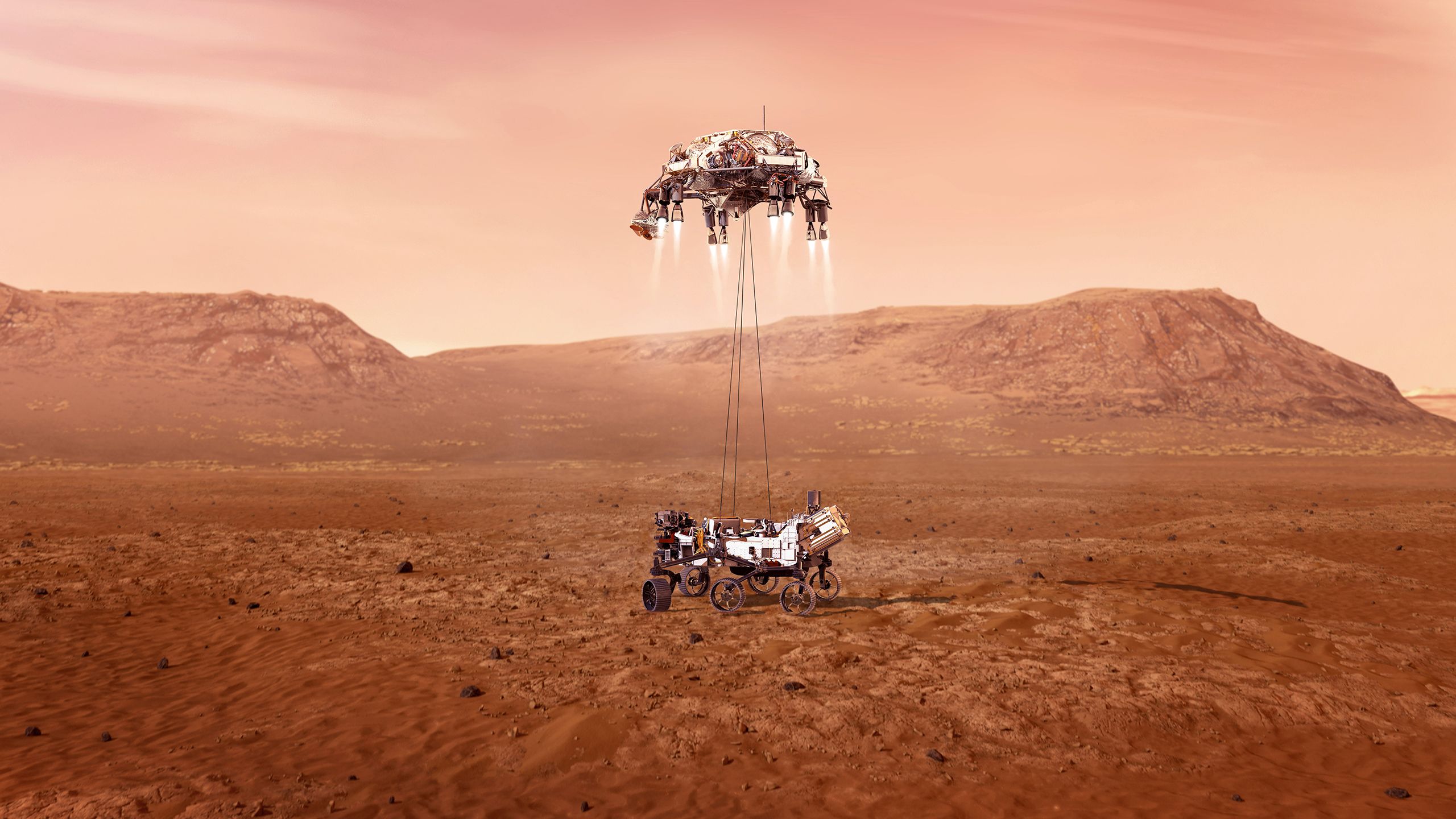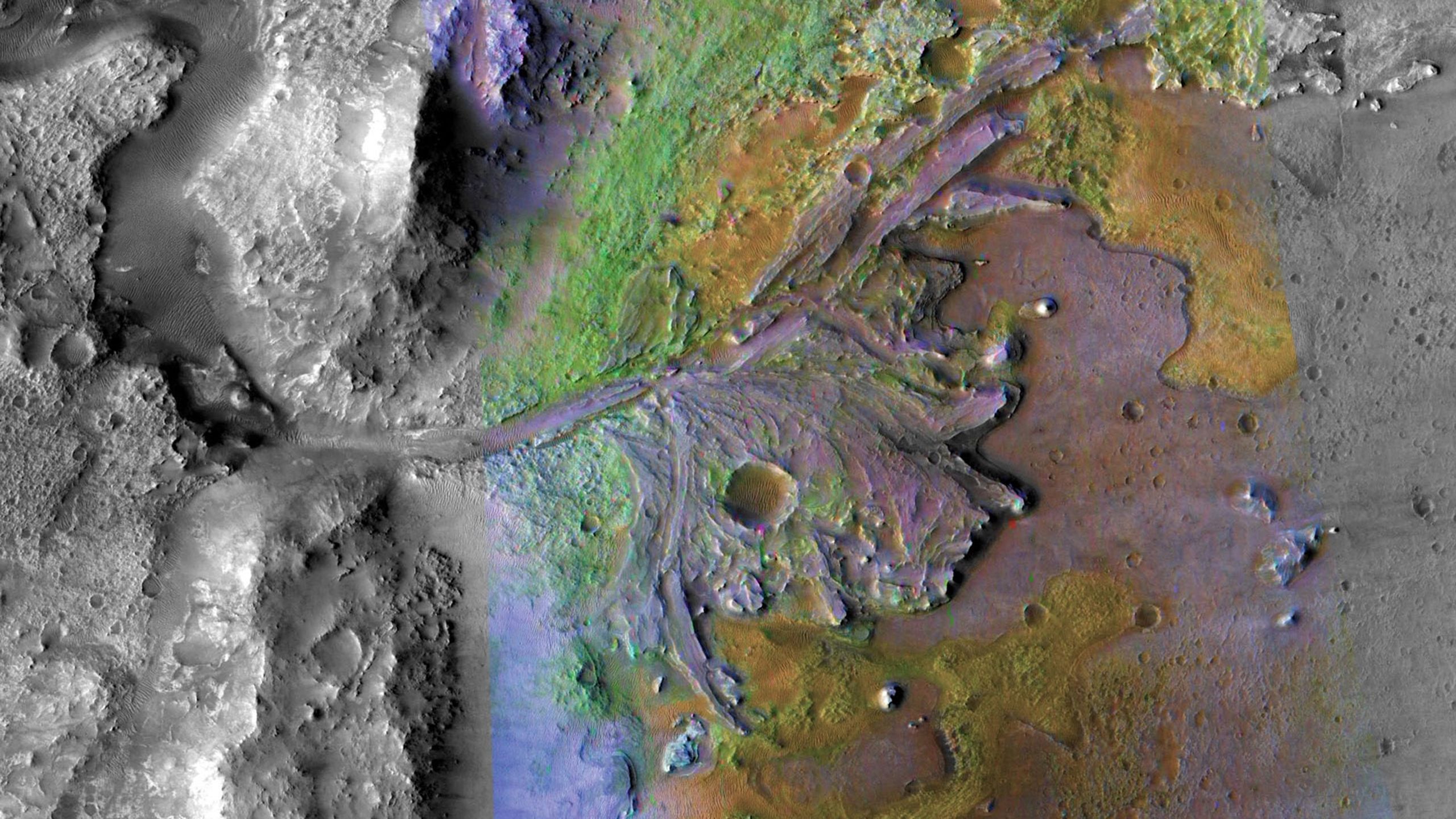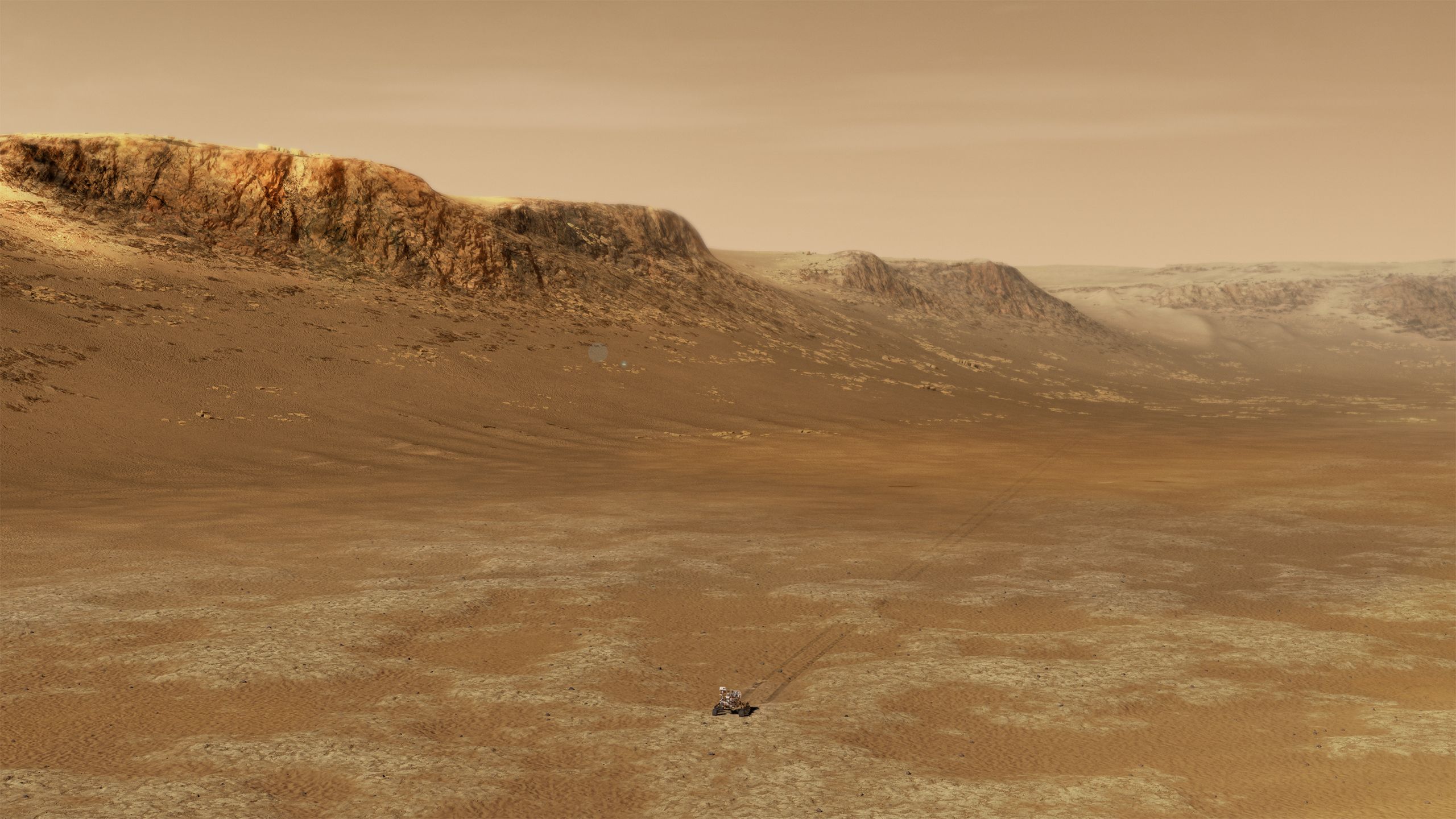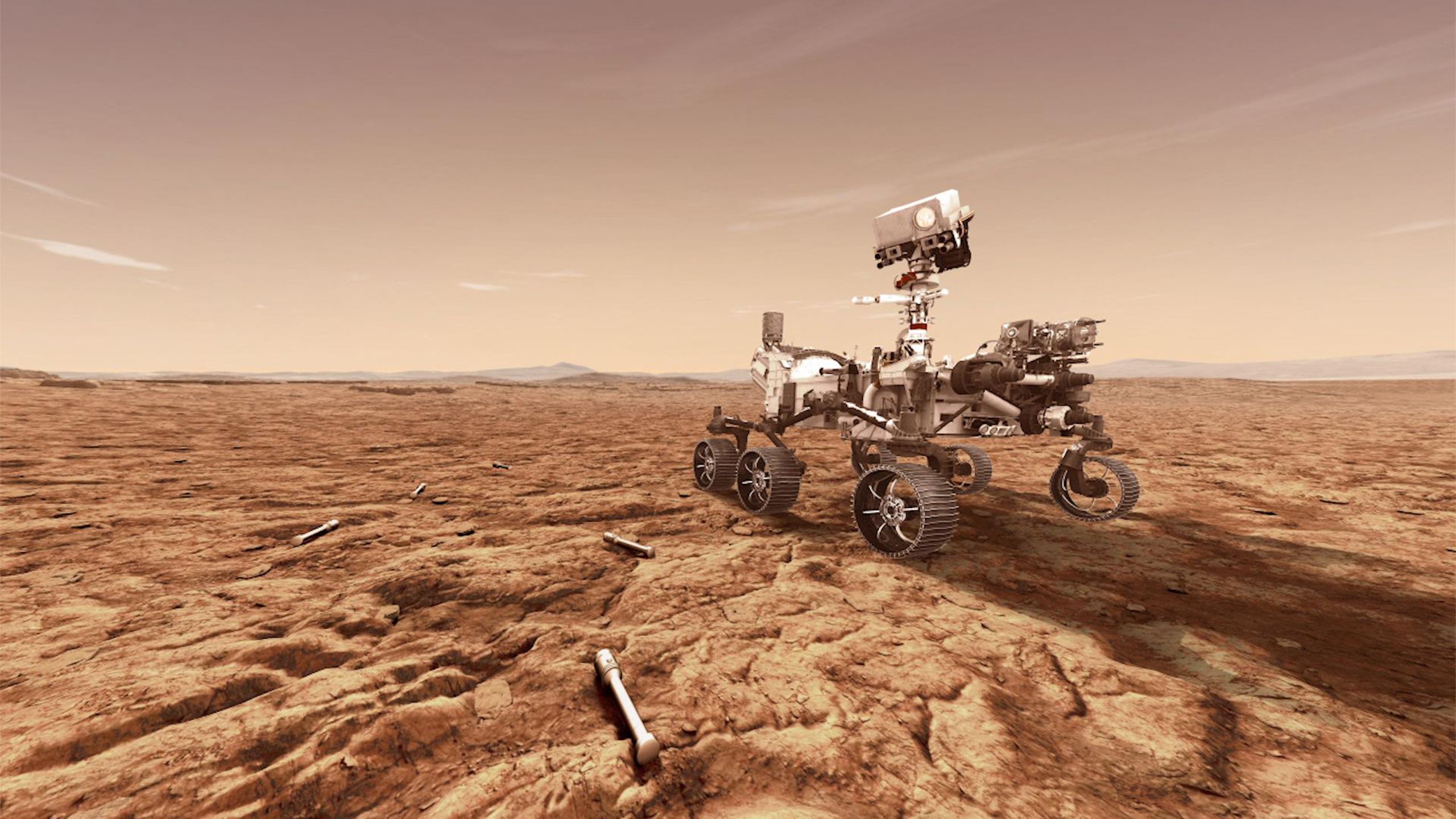Cambridge researcher joins NASA science mission searching for signs of past life on Mars

Professor Nicholas Tosca from the University of Cambridge is the only UK scientist selected by NASA to be part of the core science team for the Mars Perseverance 2020 mission, which is searching for signs of past life on the red planet.
The Mars 2020 Participating Scientist Program brings together scientists from different research fields to determine the habitability of the ancient Martian environment by looking for biosignatures – signs of possible past microbial life – and environmental data within rocks collected on Mars.
When the rocks are returned from Mars, it will mark the first time that scientists on Earth get the chance to examine Martian rocks in person.

Illustration shows NASA’s Perseverance rover casting off its spacecraft’s cruise stage, minutes before entering the Martian atmosphere. Credit: NASA/JPL-Caltech
Illustration shows NASA’s Perseverance rover casting off its spacecraft’s cruise stage, minutes before entering the Martian atmosphere. Credit: NASA/JPL-Caltech
Tosca’s role in the science team will be to reconstruct the early climate and environmental conditions in which early Martian life may have first stirred.
The Mars 2020 Perseverance Rover launched last July and will land on 18th February 2021 at the Jezero Crater, which is believed to contain sedimentary rocks formed in an ancient lake. The rocks, which are thought to be over 3.5 billion years old, contain vital clues about the Martian environment and the planet’s geological processes.
“Jezero is the best place to look because most scientists who are interested in the early surface of Mars think that an ancient lake is an ideal setting to preserve evidence of life,” said Tosca.
The rover will drill pencil-sized tubes of rock from the ancient lake, which will be stored in sealed tubes for pickup by a future mission that will ferry them back Earth for analysis. The current plan – a joint campaign between NASA and the European Space Agency – is for the Martian samples to be returned to Earth within 10 years.
“We've got very specific questions, and we think this mission will provide us with some of the answers,” said Tosca. “The fact that we may actually see these samples and study them, in my own lifetime, is just mind-blowing. When I told my son about it, I think we pretty much both had the same reaction. I kind of felt a five-year-old’s excitement in terms of what discoveries this mission might bring, and just that raw curiosity and interest in other worlds that most of us had when we were that age.
“This mission is the first step towards sending samples back from Mars – we won’t fully know how those samples preserve biosignatures until they are back in the lab, but we will be able to use rover instrumentation to select samples we think offer the best chance of preserving evidence of ancient microbial life and the chemical signatures it may have left behind.”

Nick Tosca
Nick Tosca

Jezero crater. Credit: NASA/JPL-Caltech
Jezero crater. Credit: NASA/JPL-Caltech
Tosca’s research will look for chemical and mineralogical information in the Jezero rocks, which will tell the team how the ancient lake was influenced by climate – including how the sediments were washed into the lake and were then modified by different lake water chemistry.
“We are also interested in carbonate minerals preserved in these sedimentary rocks, which can give us information on the lake water chemistry and possibly even the CO2 contents of the early Martian atmosphere,” Tosca said.
Scientists have long puzzled over the evidence for ancient lakes and valley networks on the red planet’s surface, which would have formed when the sun shone at a fraction of its current brightness. This ‘faint young sun paradox’ meant conditions on Mars may have been much drier and colder – below the freezing point of water - yet geological evidence says water was abundant.
With more data on geological and atmospheric conditions on hand, the Mars 2020 program may finally be able to help us understand not only the history of water on Mars, but also the origins of life on Earth.
“We don’t understand the specific environmental conditions that could have favoured the beginnings of life on Earth, because most of our planet’s oldest rock have since been destroyed by plate tectonics,” said Tosca. “On Mars, the ancient sedimentary rocks are accessible at the surface - you can read them like a book. And because they haven’t been altered over the last few billions of years, they look like they’ve been deposited yesterday – it’s astonishing.”
Mars has now become a key laboratory for testing the beginnings of life on Earth. According to Tosca, “In the last 20 years, we’ve witnessed a switch from Mars being the preserve of planetary scientists to a laboratory for geoscientists - the level of detail, the amount of data now available, are both so huge that you can ask very focused questions about the chemical conditions that might have favoured life.
What works so well is how this work dovetails with questions about the origins of life and the workings of climate systems, both on and beyond our home planet. We can ask big questions - but ones that are actually testable with future missions to Mars.”




